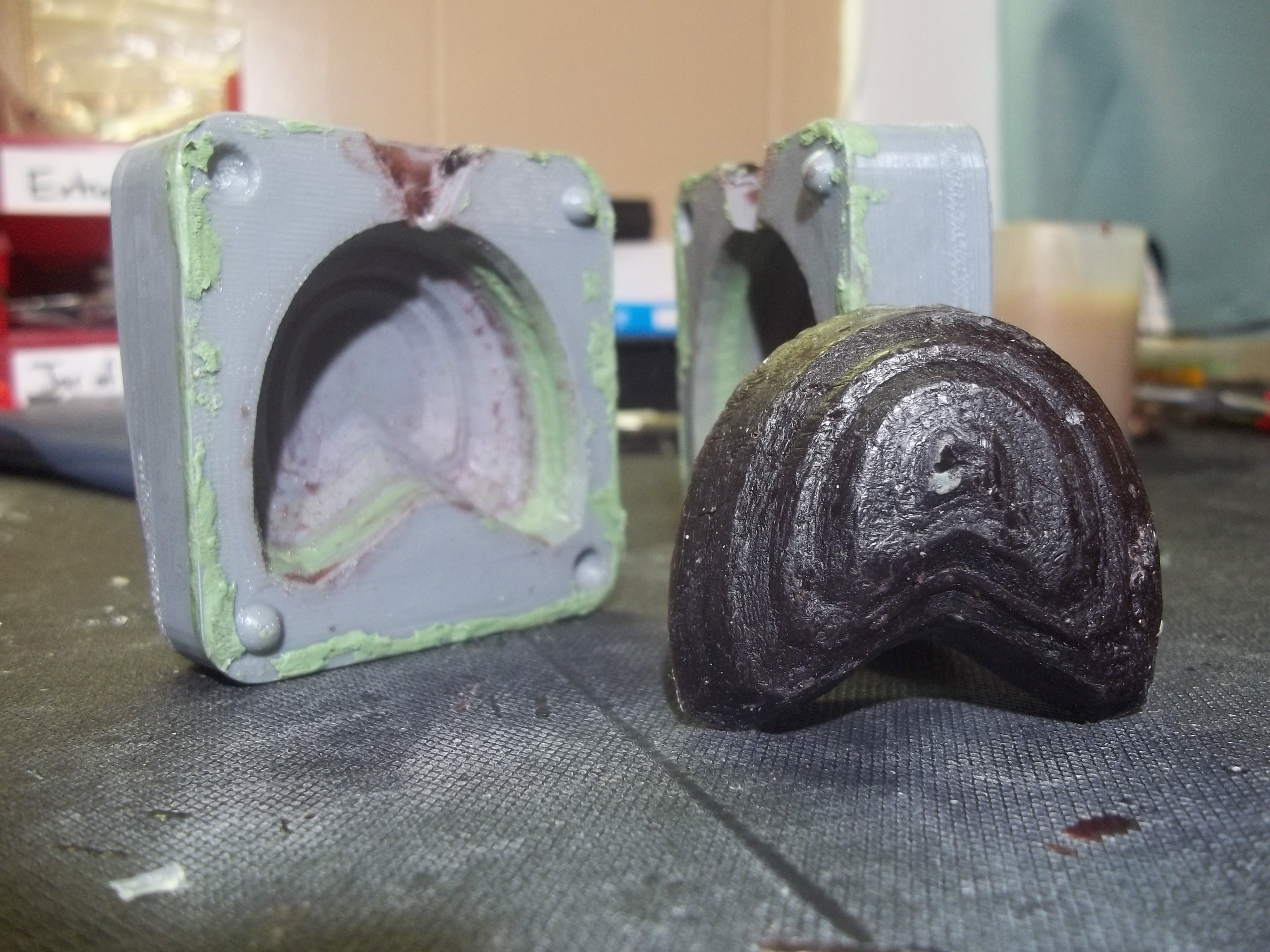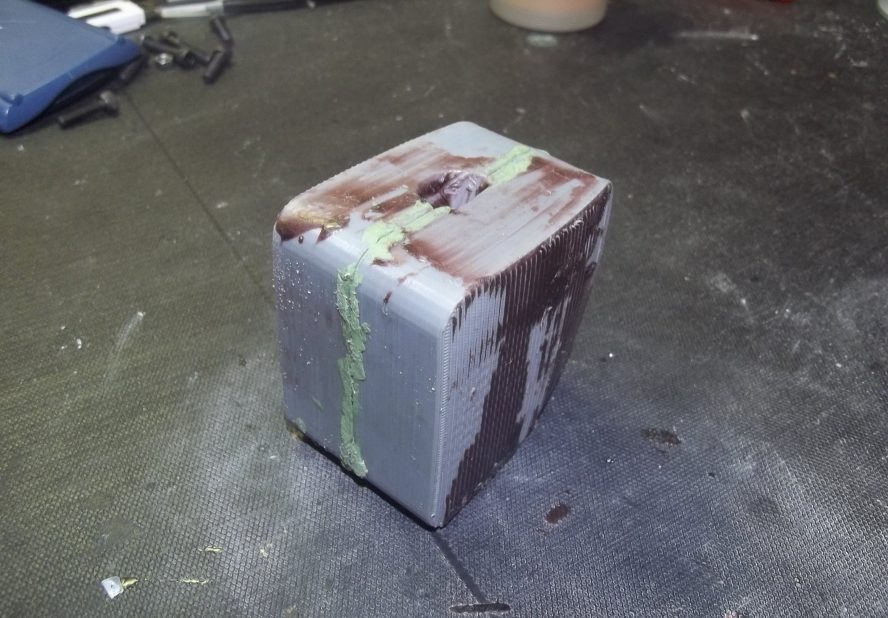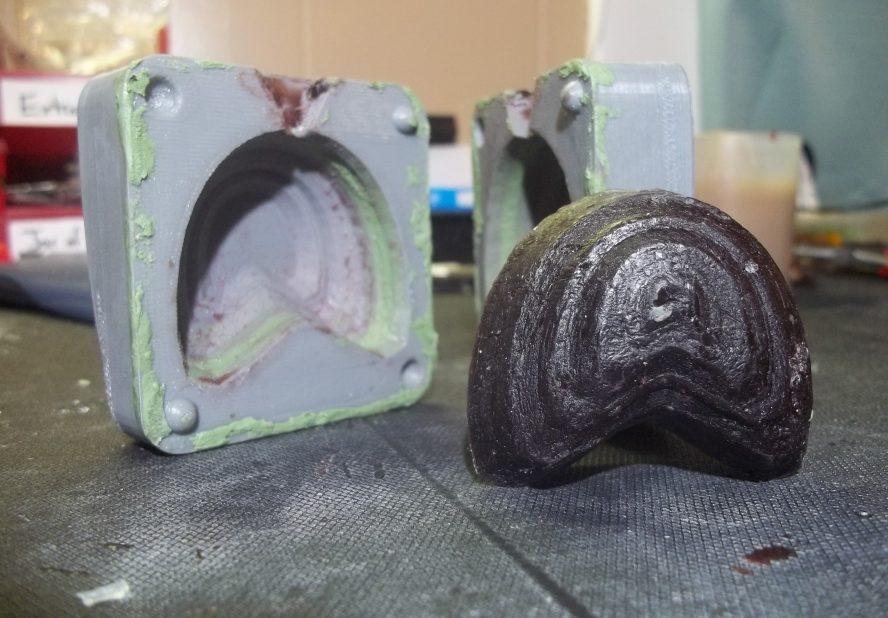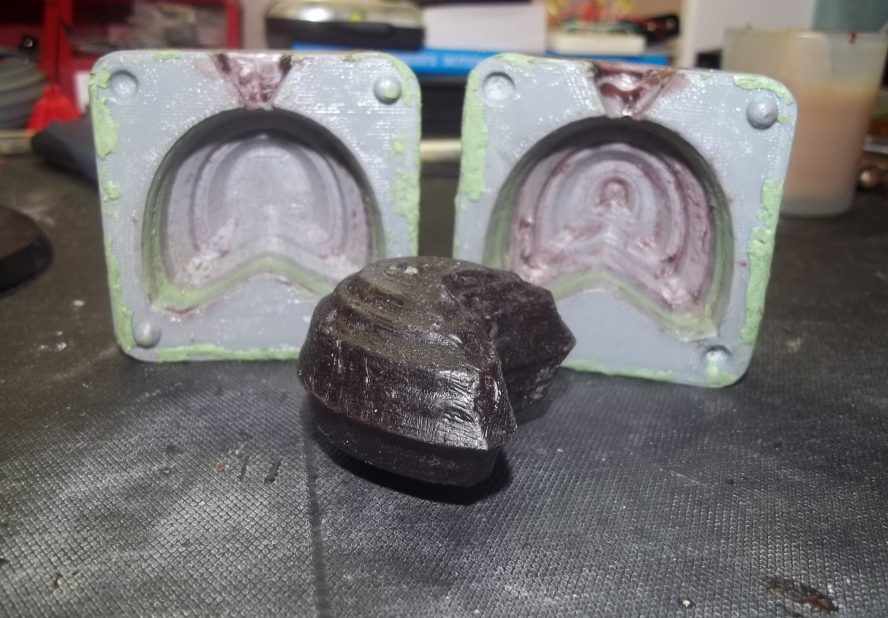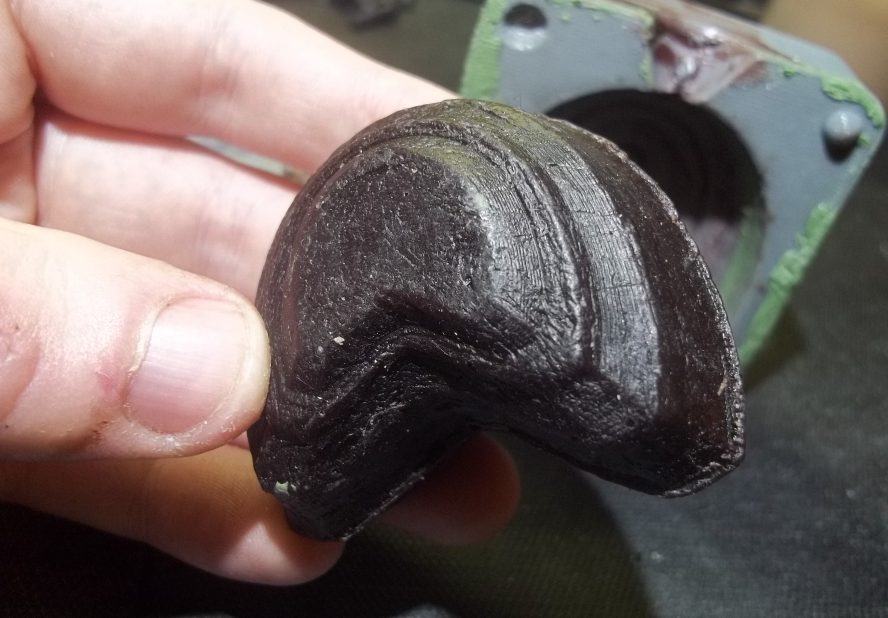Wax casting with 3D-printed two-part molds
At my university’s sculpture studio, whenever a piece is meant to be cast in aluminum or bronze, wax is the tried-and-true medium of choice. Wax is useful for its low melting point and relatively mess-free behavior when put into a kiln. Art students are taught to create plaster or silicone molds around objects they want to use, then pour or brush melted wax into the plaster mold to get a wax copy of their objects.
Earlier in the semester, I worked out a couple of neat OpenSCAD scripts to automatically generate both two-part and open-face molds from arbitrary 3D models. I’ve had good success with using them to make cool casts using Oogoo, chocolate, resin, RTV silicone and alginate, and I’ve even shown that the 3D-printed ABS plastic objects can be used as a direct replacement for wax. But I was still curious about one possibility with wax: can I pour wax directly into 3D-printed molds, or will they get destroyed in the process?
Why it works
The type of wax that we use for casting at UNK is a mixture of “victory brown” wax and handfuls of scrap vent and gate wax. Victory wax has a melting point of about 175F (80C). ABS, being a thermoplastic with a glass transition, softens at around 194F (90C), melts at 221F (105C) and becomes more and more fluid-like as the temperature rises beyond that, until catching fire at around 406C (763F).
So, believe it or not, you actually can cast molten wax into 3D-printed molds without softening, melting or burning them at all! This means that you can actually design really odd or precise 3D models in software, then print a mold on a 3D printer and create decent wax copies to integrate into sculptures!
It is worth noting that due to the textured nature of 3D-printed ABS (the filament ‘grain’), a release agent is pretty much necessary to get the casts out of the molds. I used Vaseline, which worked perfectly, but also compromised the detail of the texture. If someone can suggest another release agent that preserves the unique texture of 3D-printed objects, I’d love to try it but for now, use Vaseline, will ya?
